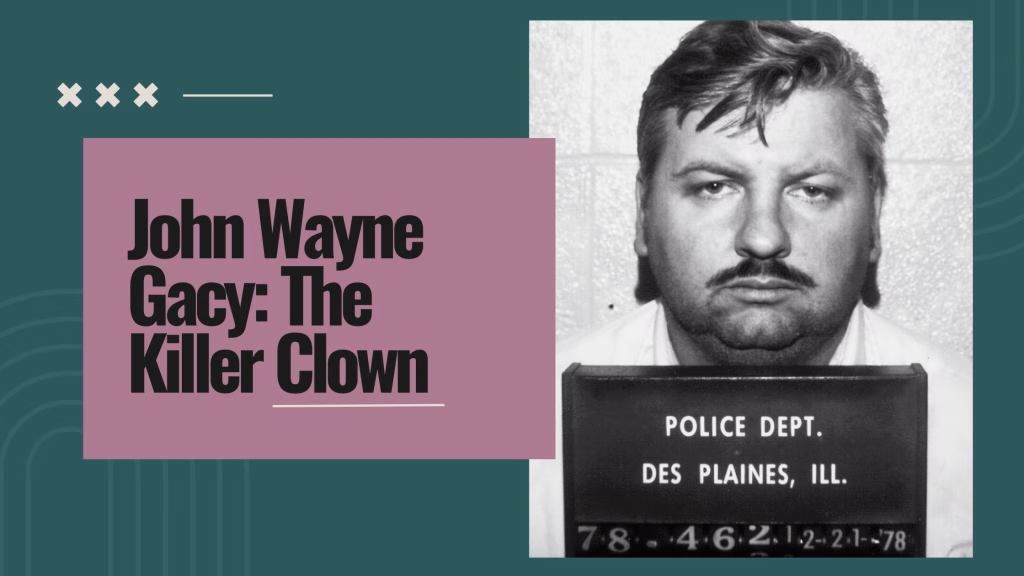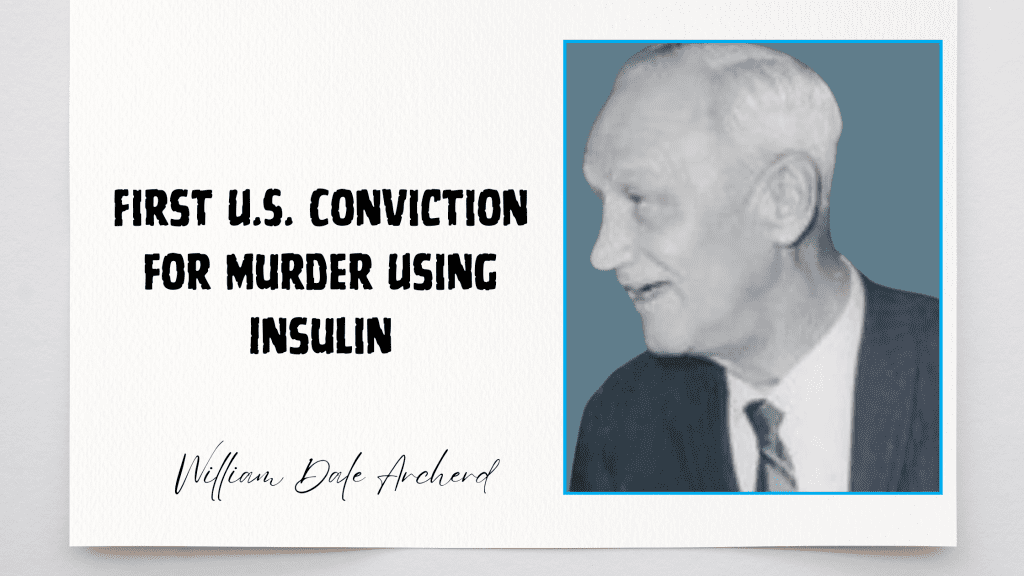I’ve been down the rabbit hole on John Wayne Gacy for weeks now, poring over trial transcripts, old news reels, and even those eerie clown photos that still give me chills. You know the ones—Pogo the Clown, grinning from behind greasepaint while kids cheer at parties. But peel back the makeup, and you find a monster who lured 33 young men and boys to his home between 1972 and 1978.
He strangled them, hid their bodies under his crawl space, and dumped others in the Des Plaines River. What hits me hardest isn’t just the body count. It’s how he fooled everyone: Neighbors saw a hardworking contractor. Cops waved at him during block parties. Even his own family missed the rot until the smell gave him away. So how does a “pillar of the community” become Chicago’s worst nightmare? And did his abusive dad really wire him to kill, or was Gacy born broken? Let’s dig in together. I’ll share what kept me up reading those 600 hours of psychologist interviews.
Who Was John Wayne Gacy? The Man Behind the Clown Makeup
John Wayne Gacy Jr. wasn’t some shadowy figure lurking in alleys. He shook hands with politicians, coached Little League, and dressed as Pogo the Clown for charity events. Born March 17, 1942, in Chicago, he grew up in a working-class family that looked stable on the outside. His dad, John Sr., was a machinist for the Chicago Transit Authority. Mom Marion worked as a homemaker. Gacy had two sisters, Joanne and Karen. The family lived in a modest bungalow on West Lawn Avenue. But stability? That was an illusion.
Gacy idolized his namesake, the Duke, and dreamed of success. He studied business management at Northwestern Business College. By 21, he landed a job managing KFC franchises in Las Vegas and Iowa. He seemed on track. In 1964, he married Marlynn Myers. They had two kids, Michael and Christine. But cracks showed fast. Gacy joined the Jaycees, a civic group, and climbed ranks. He hosted parties. He raised funds. Yet behind closed doors, he pressured men for sex. One 1967 incident landed him in prison for sodomy. He served 18 months. Released in 1970, he moved back to Chicago. He started Gacy’s General Contracting. Business boomed. So did the double life.
What stands out in my research? Gacy’s charm. He volunteered at children’s hospitals in clown makeup. Kids loved Pogo. Adults trusted him. He even met First Lady Rosalynn Carter in 1978. Weeks later, cops dug up his yard. Irony doesn’t get darker.
John Wayne Gacy’s Childhood: Abuse, Alcoholism & the Seeds of Rage
Gacy’s home wasn’t warm. It was a pressure cooker. His father drank heavily. John Sr. belittled his only son. He called Gacy a “sissy.” A “mama’s boy.” Beatings came with belts or fists. Gacy’s mom shielded him. But she couldn’t stop the verbal lashings. The school added fuel. Classmates taunted his weight. His glasses. Teachers labeled him slow. Gacy withdrew. He buried anger in books. In daydreams of heroism.
Medical records paint a grim picture. At age 11, Gacy blacked out. Doctors found “blackouts of an unknown origin.” He wet the bed until 9. Headaches plagued him. His dad mocked it all. “Toughen up,” he’d snap. Gacy craved approval. He mowed lawns for neighbors. Delivered papers. But Dad saw weakness. Alcoholism worsened. Fights echoed nightly. Gacy watched. He learned silence. He learned hate.
By his teens, Gacy acted out. He stole hubcaps. He fought bullies. In 1957, a head injury from a fall landed him in the hospital. Doctors noted “personality changes.” He grew manipulative. Charming on the surface. Seething below. High school brought girls. But Gacy preferred boys. He hid it. Society demanded straight. Dad’s rage reinforced shame. Psychologists later linked it. Repressed sexuality twisted into control. Gacy married Marlynn in 1964. But prison in 1968 exposed him. Iowa sodomy charges. Ten counts. He served 18 months. Released, he vowed to change. Instead, rage festered. Chicago welcomed him back. So did his demons.
Digging into those family letters? Heartbreaking. Gacy wrote his mom from prison: “I want to make you proud.” But dad’s shadow loomed. “Worthless,” John Sr. called him. That word echoed in every kill.
The Killer Clown’s Crimes: Luring Boys to a House of Horrors
Gacy’s double life peaked in the 1970s. His Norwood Park home at 8213 West Summerdale Avenue looked normal. Crawl space below? A tomb. From 1972, he targeted teens. He offered jobs. Cash. “Contracting work.” Boys from his club. Hitchhikers. Runaways. Once inside, handcuffs clicked. Drugs followed. Then strangulation. He watched the struggle. Called it “foreplay.”
First kill: John Butkovich, 17. May 1976. Gacy hired him for yard work. Paid half. Then snapped. Strangled with a rope. Buried under the floor. Gacy partied that night. Friends came over. Smell? “Sewer issue,” he lied.
The crawl space is filled. 26 bodies. Rope. Chlorform. Saws. Gacy posed some. Like dolls. He kept heads in the freezer. Talked to them. “Company.” By 1978, space was cramped. He dumped in the Des Plaines River. Five floated up. Panic hit. Cops linked the missing boys.
Gacy’s methods evolved. Early: Quick kills. Later: Torture. He drilled heads. Injected acid. One victim, Tony Anton, 16. Lured for “photos.” Gacy raped him. Strangled. Kept skull. Another, Robert Piest, 15. Last victim. December 11, 1978. Gacy promised a job. Piest vanished. His mom called the cops. That tip cracked it.
33 victims total. Ages 9 to 19. Mostly boys. Many are gay or poor. Gacy said, “trash.” He meant threats to his image. Researching those names? Devastating. John Szyc, 18. Saved for the car. Gacy lured with $90 watch. Matthew Bowman, 19. Hitched a ride. Vanished. Families waited years. Gacy waved at the searches. Smiling.
Investigation: The Crawl Space Dig That Broke the Clown
Missing boys piled up. 1975: John Butkovich is gone. 1976: Greg Godzik, 17. Van at Gacy’s. Cops cleared him. “Runaway.” 1977: Jon Prestidge, 20. Last seen at Gacy’s party. No probe.
Read more: Zhang Jun: The Chinese Gang Leader Who Killed 28 in Armed Robberies
Turning point: December 1978. Robert Piest, 15. Vanished after a job interview at Gacy’s firm. Mom alerted. Cops searched. Receipts linked Gacy. Warrant came. December 21. Team dug the crawl space. Smell hit first. Then bones. 26 bodies. Polaroids showed horrors. Heads in freezer. Gacy confessed. “I did it.” Mapped dumps. River dive found five more.
Task force: 50 officers. They ID’d victims. Families ID’d clothes. Gacy’s wife, Carole, divorced in 1976. She smelled “sewage.” Left. Clues ignored.
Trial prep: 1980. Gacy claimed insanity. Psychs disagreed. “Manipulative psychopath.”
John Wayne Gacy’s Trial: The Clown Takes the Stand
January 6, 1980. Des Plaines Court. Gacy faced 33 counts. Prosecutors showed photos. Families sobbed. Gacy testified. 45 hours. He blamed “Rope Trick.” Multiple personalities. The jury didn’t buy it. Deliberated 2 hours. Guilty. Death sentence.
Appeals dragged. 1988: Supreme Court upheld. Gacy fired lawyers. Wrote books. “They were trash.” No remorse. Executions waited. 1994: May 10. Lethal injection. Last words: “Kiss my ass.” Died at 52.
Brain study: Dr. Helen Morrison interviewed 600 people. No tumors. “Born to kill.” 2025 scans confirm. Normal structure. Chilling.




